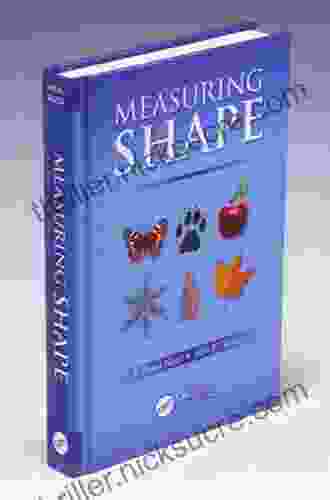Shape, an intrinsic property of objects, defines their physical form and plays a crucial role in numerous aspects of our lives. From the design of automobiles to the study of biological structures, understanding and measuring shape are essential. Brent Neal, a pioneer in the field of shape analysis, has dedicated his career to developing innovative techniques for shape measurement. This article delves into the fascinating world of shape measurement, exploring the principles, methods, and applications of Neal's groundbreaking work.
Brent Neal: A Visionary in Shape Measurement
Brent Neal, a professor of mechanical engineering at the University of Texas at Austin, has revolutionized the field of shape measurement. His research focuses on developing advanced techniques for capturing, analyzing, and representing shape data. Neal's contributions have had a profound impact in diverse fields, including engineering, computer graphics, and biology.
4.3 out of 5
| Language | : | English |
| File size | : | 13314 KB |
| Text-to-Speech | : | Enabled |
| Screen Reader | : | Supported |
| Enhanced typesetting | : | Enabled |
| Print length | : | 433 pages |
Principles of Shape Measurement
Shape measurement involves quantifying the geometric properties of objects. The fundamental principle underlying most shape measurement techniques is to capture data points that represent the object's surface or boundary. These data points are then processed to extract shape features, such as size, shape complexity, and curvature.
Methods of Shape Measurement
Neal has pioneered several methods for measuring shape, each tailored to specific applications. These methods fall into two broad categories:
- Contact methods involve physically touching the object to obtain shape data. Techniques like coordinate measuring machines (CMMs) and laser scanners use probes to capture data points on the object's surface.
- Non-contact methods measure shape without physical contact. Techniques like photogrammetry and structured light projection use cameras and light projectors to capture shape data from a distance.
Applications of Shape Measurement
Shape measurement finds applications in a wide range of fields, including:
- Engineering: Shape measurement is essential in product design, manufacturing, and quality control.
- Computer graphics: Shape data is used to create realistic 3D models for virtual environments and simulations.
- Biology: Shape measurement is used to study cell morphology, tissue structure, and organ development.
Neal's Shape Measurement Techniques
Neal's research has led to the development of several novel shape measurement techniques, including:
- Shape from shading: This technique uses shading information in images to infer the shape of objects.
- Shape from motion: This technique uses multiple images of an object taken from different viewpoints to reconstruct its shape.
- Shape from texture: This technique uses texture patterns on an object's surface to infer its shape.
Neal's Contributions to Shape Measurement
Neal's work has made significant contributions to the field of shape measurement:
- Development of novel shape measurement techniques: Neal's techniques have expanded the capabilities of shape measurement, enabling researchers to measure complex shapes with greater accuracy.
- Advancement of shape analysis algorithms: Neal's research has led to the development of advanced algorithms for processing and analyzing shape data.
- Establishment of shape databases: Neal has played a key role in establishing databases of shape data, which are valuable resources for researchers and practitioners.
Brent Neal's groundbreaking work has revolutionized the field of shape measurement. His innovative techniques and contributions have opened up new avenues for shape analysis and expanded its applications in a wide range of fields. As technology continues to advance, Neal's pioneering work will continue to inspire researchers and shape the future of shape measurement.


































































































































































































































































































































































































































































































































































































































